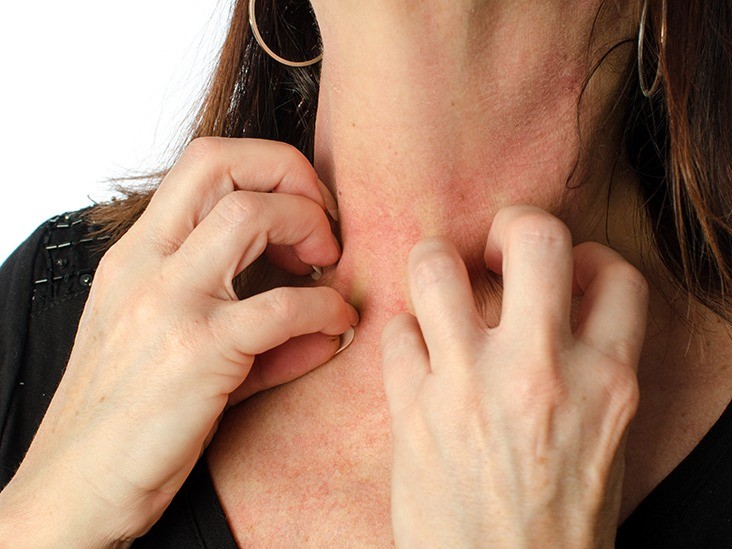Inspirational journeys
Follow the stories of academics and their research expeditions
ANAPHYLAXIS AND ITS CLINICAL FEATURES

1. The acute, potentially fatal illness known as anaphylaxis is brought on by the release of chemical mediators from mast cells and basophils. The primary preformed chemical mediator is histamine. Proteoglycans, enzymes in the Hageman factor pathway, neutrophil chemotactic factor, and eosinophil chemotactic factor are more examples.
2. Anaphylactic versus anaphylactoid reactions
a) Unlike anaphylactoid reactions, which happen through a variety of pathways and directly degrade mast cells, anaphylactic reactions entail antibody-antigen interactions mediated by immunoglobulin E (IgE).
i) Anaphylaxis
- — In IgE-mediated reactions, the antigen has already been exposed, specific IgE has been produced by plasma cells, and the IgE has been able to bind to receptor sites on mast cells and basophils. This results in the release of preformed mediators, particularly histamine, which triggers a chain of subsequent events that end in anaphylaxis.
- — One-third of all occurrences of anaphylaxis are caused by food, and other causes include antibiotics, foreign proteins (such as streptokinase), hymenopteran venom, and preservatives. Idiopathic conditions make up about one-third of all cases.
ii) Anaphylactoid reactions
- —Anaphylactoid reactions occur via mechanisms that do not involve IgE. The sequence of events involves the direct release of mediators from mast cells and basophils.
- — Causes of anaphylactoid reactions include human plasma and blood products, direct histamine releasers (e.g., opiates, curare, dextran, radiocontrast media), and miscellaneous agents and processes, such as exercise, physical factors, vibration, nonsteroidal anti-inflammatory drugs (NSAIDs), and mastocytosis.
b) Anaphylactic and anaphylactoid reactions are clinically the same because comparable mediators produce similar target organ sequelae. Treatment for both reactions is directed at the end-organ signs and is the same. Because of these similarities, the term anaphylaxis will be used to encompass both IgE and non-IgE reactions.
CLINICAL FEATURES
1. Symptoms are most likely to occur minutes after exposure to the triggering agent but may occur in seconds to a few hours. Early or subtle signs and symptoms of anaphylaxis include cutaneous flushing, pruritus, voice change, and a sense of impending doom. Usually, the later the symptoms occur, the less severe the reaction.
2. Clinical findings prominently involve the skin (urticaria), the upper airways (laryngeal edema, hoarseness, stridor), the lower airways (bronchospasm), and the cardiovascular system (hypotension, vasodilation, dysrhythmia, myocardial infarction [MI]), and the gastrointestinal system (abdominal cramps).
3. Death may occur from respiratory causes (70%) or cardiovascular causes (25%). (Autopsy findings include acute pulmonary hyperinflation, laryngeal edema, visceral congestion, pulmonary edema, intra-alveolar hemorrhage, urticaria/angioedema, and MI.)
Clinical Manifestations of Anaphylaxis
| Organ System | Reaction |
| Cutaneous | - Diaphoresis - Flushing - Pruritus - Piloerection - Urticaria - Angioedema |
| Head, ears, eyes, nose, and throat | -Conjunctivitis -Metallic taste -Hoarseness -Rhinorrhea/nasal congestion -Stridor |
| Pulmonary | - Dyspnea - Cough - Tachypnea - Wheezing |
| Cardiovascular | - Tachycardia - Dysrhythmia - Hypotension |
| Gastrointestinal | -Abdominal cramps -Diarrhea Nausea and vomiting |
| Neurologic | - Altered mental status - Dizziness - Seizure |
DIFFERENTIAL DIAGNOSES: The diagnosis of anaphylaxis is generally readily apparent based on history and clinical findings but may sometimes be confused with overlapping or other distinct entities.
Differential diagnosis involves the following:
1. Judging whether the symptoms and signs represent a simple allergic or pseudoallergic reaction (e.g., asthma exacerbation, urticaria), as opposed to anaphylaxis
2. Considering whether some of the symptoms and signs represent a secondary process (e.g., MI).
3. Determining if a completely different type of problem could be occurring (e.g., drug intoxication, hypovolemic shock).
Tags:
ANAPHYLAXIS anaphylactoid reactions Anaphylaxis and its clinical features Gastrointestinal Cardiovascular Dyspnea Vomiting Cough Pulmonary Neurologic0 Comments
Categories
Recent posts
IQAI: Transforming Healthcare - One Success Story at a Time
Wed, 20 Sep 2023





Leave a comment